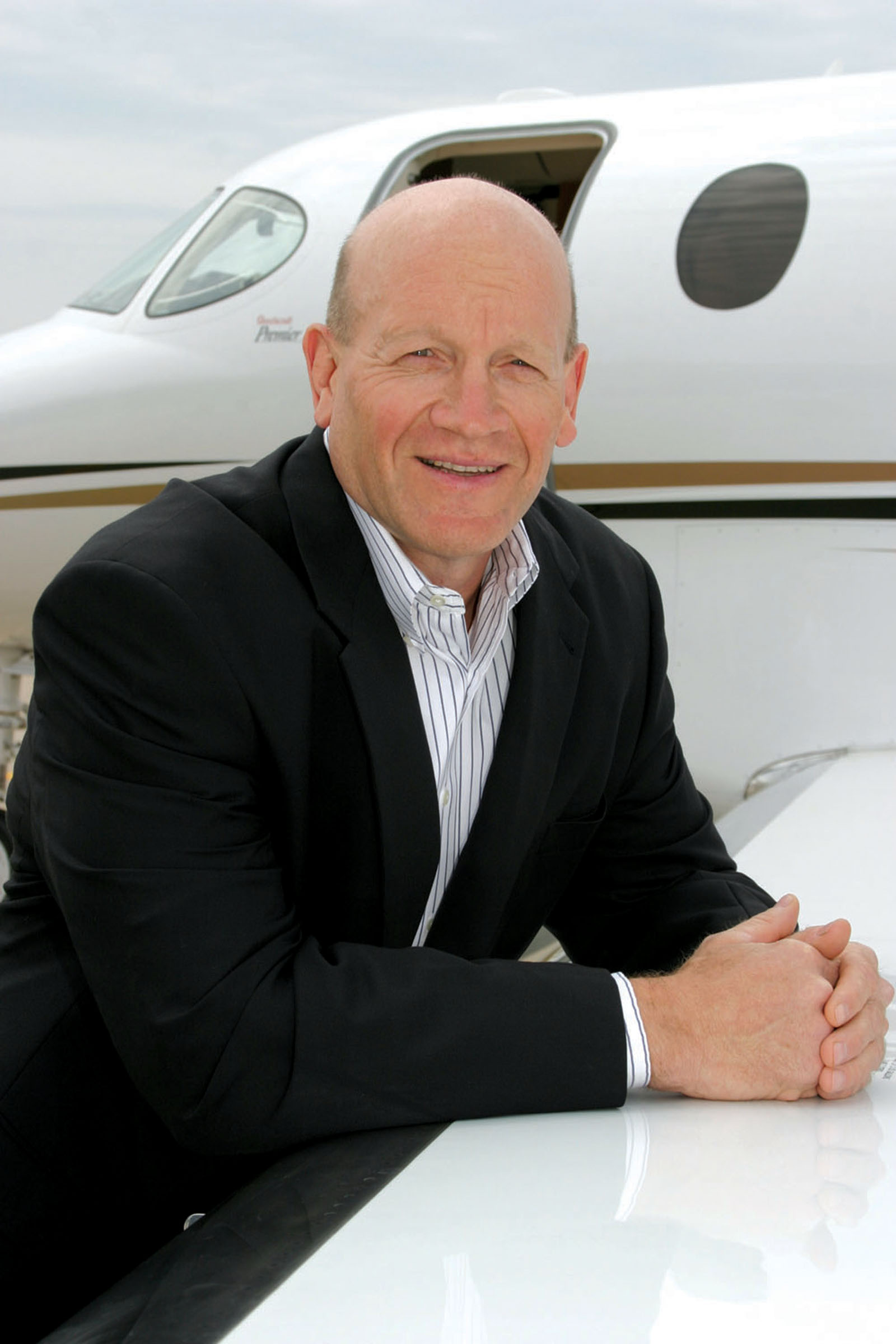By Karen Di Piazza
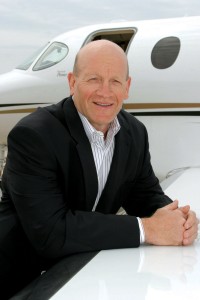
Using solid leadership principles, James E. Schuster, chair and CEO of the Raytheon Aircraft Company, turned the company around from $0 to a positive cash flow for the first time in 11 years.
James E. Schuster knew he would face challenges when he became elected chair and CEO of Raytheon Aircraft Company on May 26, 2001. The Wichita, Kan.-based aircraft manufacturer was in serious trouble; poor leadership had become the bane of its existence. Employees weren’t appreciated and their ideas weren’t considered or passed along. They had lost faith in the company’s ability to lead, aircraft production was askew, and customer service and satisfaction had slipped as priorities. Schuster said profits and revenue ledgers told the real ugly story.
“My mission was simple: ‘Fix it!'” said Schuster, who was also elected executive vice president of the parent company, the Raytheon Company, headquartered in Lexington, Mass.
Because of Schuster’s leadership, RAC’s problems aren’t only fixed, but it’s also the first time in 11 years that the company has been profitable. RAC now has a robust cash flow and can stand tall on its own.
Last month, on Dec. 2, RAC celebrated the largest, single non-military order in its history, when fractional provider NetJets Inc. signed a contract for the purchase of 50 new Hawker 4000 midsize jet aircraft. The deal, inclusive of a separate, 10-year guaranteed maintenance program, is valued at more than $1 billion. This sale had been put off because NetJets was working out a contract arrangement with its pilots. The contract was settled in November.
William H. Swanson, then president of the Raytheon Company and its current chair and CEO since May 2003, chose Schuster to mend the broken company. Swanson knew the visions and teachings of his “unwritten rules of management” would be utilized.
In an attempt to make a PowerPoint presentation for his company’s management teams, Swanson unwittingly had written what’s become known as the “secret CEO bible.” After Warren Buffett discovered the spiral-bound booklet, titled “Unwritten Rules of Management,” he promptly sent 100 copies to his senior presidents and CEOs, with a simple message: “Read it.”
Swanson’s how-to booklet is so successful that executives and CEOs from around the world have ordered more than 100,000 copies. But Swanson decided not to publish it traditionally. Instead, he offers it to the public on Raytheon’s website (www.raytheon.com). If an individual orders a copy, it’s free of charge. For orders of more than 50 copies, Swanson has set up a donation scale to match the amount of orders. The donations support MATHCOUNTS, which promotes excellence in math among American middle school students.
It’s hard to believe that a small booklet could have such an impact on leaders globally, but it has. Based on Swanson’s 30-plus years at Raytheon, the booklet consists of 25 straightforward directives and includes insights into what it takes to be successful. Schuster, who joined Raytheon in 1999, knows each “rule” very well.
Schuster has taken rule number 4 to heart. The rule is: “Look for what’s missing. Many know how to improve what’s there; few can see what isn’t there.”
“Our Hawker and Beechcraft brands were missing from the forefront of our business,” Schuster said.
Within six months of Schuster’s arrival at RAC, only 20 percent of its management team remained. The other 80 percent didn’t share his business strategies. Schuster had brought in 11 new top management leaders by July 2001. But after he analyzed the company’s costs, 500 contract employees and more than 800 full-time employees were let go. After the first eight months, more than 3,000 people had been laid off.
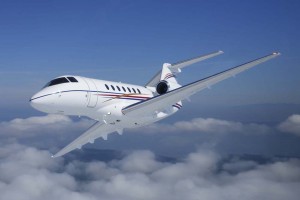
Raytheon’s Hawker 4000 jet got NetJets’ attention. The fractional provider ordered 50 new Hawker 4000s, and signed a 10-year maintenance agreement with a purchase value exceeding $1 billion, resulting in RAC’s largest commercial order ever.
Today, Raytheon Company is a $20 billion company with more than 80,000 employees; more than 8,700 of them work for RAC.
Schuster doesn’t believe in holding back. He’ll tell you how it really is, which matches Swanson’s rule number 6: “Work for a boss with whom you are comfortable telling it like it is. Remember that you can’t pick your relatives, but you can pick your boss.”
Schuster, who says he’s tenacious in preserving RAC’s business, also agrees strongly with rule number 9: “Persistence or tenacity is the disposition to persevere in spite of difficulties, discouragement or indifference. Don’t be known as a good starter but a poor finisher.” Schuster finishes everything he sets out to accomplish.
Rule number 12 defines Schuster’s personality: “Don’t be timid; speak up. Express yourself, and promote your ideas.” And rule number 25 can be seen in employee morale: “Have fun at what you do. It will reflect in your work. No one likes a grump except another grump.”
Successful versus unsuccessful businesses
Schuster is extremely confident in RAC’s performance today, but it took hard work on his part, and from his employees.
“The employees of this company weren’t well informed about the reality of the difficulties the business was facing,” he said. “Many of the employees were aware of problems. They were committed to dealing with them, but leadership really hadn’t galvanized the organization in the right way. But we simplified our priorities four years ago. When I meet with investors, I keep telling them, ‘I’m going to be somewhat boring, as our priorities are exactly the same.’
“I think people feared that maybe leadership had lost its way. It wasn’t focused on customer support or on quality, as it needed to be. But the people here rallied very quickly around the basic principles of our strategy. We talked about quality, and about service and support being our highest priorities. We talked about getting our cost structure in line, and getting our product portfolio modernized.”
In order to ensure the company’s success, Schuster then employed the most talented employees.
“Finding talent in any organization should be a priority,” he said. “We’ve held to those principles as the keys to our success. I think sometimes people fail to realize and stay in touch with what’s going on in the business; they fail to realize how serious problems can become. The issues in the aircraft business aren’t different than the issues that you face in any business.
“Somewhere along the line, you either get schooled in those fundamentals, or you don’t. But I think leaders can get into positions of significant responsibility without necessarily having all the right fundamentals in their background.”
He said the fundamentals that we talk about in this business are quality products.
“I don’t care if you’re buying a car, a toaster or a TV; you expect that you’re going to shop for a quality product and you want it at a reasonable price,” he said. “That means that the cost has to be in line. Then, it’s very important, particularly with larger ticket items, that if you have problems, you expect to be taken care of.”
He says that’s exactly the way it is in the aircraft business, and that failing to maintain a focus on those fundamentals is a characteristic of failed businesses everywhere.
“If you look at successful businesses, most, if not all, have certain things in common, and it’s those basic tenets,” he said. “I learned that early and often in my career. If I were to go into another business next week, I’d go in with the same assumptions: these are things that are going to be important. Now that doesn’t mean that’s all that’s important.”
Attributes of a good leader
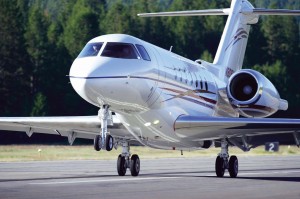
The field performance of the new Hawker 4000 is impressive and best in class in the super-midsize category, with a 4,509-foot takeoff field length. It can go from sea level to 37,000 feet in just over 13 minutes.
When asked to share three or four attributes that make a good leader, Schuster didn’t hesitate; ethics must come first.
“In today’s world, in particular, ethics are absolutely paramount,” he said. “The world is very intolerant these days about unethical behavior in leadership. I think that if anyone thinks they can get by with a wink and a nod, when it comes to ethics, they’re sadly mistaken. Understanding your personal responsibilities is important, too. Leaders have to have a strong sense of personal responsibility, relative to communications, and it’s really simple. I have an old saying: ‘People are wild about the truth.’
“I also believe it’s the leadership’s responsibility to be able to craft a compelling, honest message for everyone, because people are smarter than you give them credit for. Generally speaking, if you tell them the truth, they’ll arrive at the same conclusion you do. You won’t always get consensus, but they’ll arrive in a similar fashion. But it’s a personal responsibility. This isn’t something that you can just hand off: ‘Well, OK. Somebody write me a letter and somebody take care of this message.’ I mean, there’s a personal role that we all play; there’s a place for that.”
He also believes that companies that compete internationally or search for talent in the marketplace should have a sense of the importance that diversity plays in these roles.
“Diversity is really important,” he said. “It’s a subject that’s often highly misunderstood. If you look at really successful companies and leaders in the U.S. and around the world today, they’ve really developed a sense of appreciation for just what’s at stake. That’s particularly the case as you compete for highly skilled, educated employees, both domestically and internationally.”
Schuster served as Raytheon’s former diversity champion. He said that changed forever how he relates to people, and his appreciation for them.
“It’s a senior level kind of appointment within Raytheon, where Bill Swanson basically chooses a person to be the leader for two years,” he said. “Bill was the first diversity champion for Raytheon; I was the second. That person serves as a leadership coordinator, figurehead, speaker, etc., for the company, relative to the subject of diversity. You make certain that on the senior leadership level of the company, diversity gets the same strategic thinking, the same discussion and the same level of priority as other important issues.”
Raytheon counts on the diversity champion to make sure the whole corporation stays on track and makes progress.
“It was a real honor for me when Bill asked me to take that role,” Schuster said. “I would have to say it was one of the most fulfilling assignments I’ve had in my career. I learned an incredible amount. I remember Bill telling me, ‘There are life-changing moments in that assignment,’ and there really were. You learn a lot about people, yourself and what makes a business great. I came out of there a very different person, just like I think Bill did.”
Ongoing dialogue with personnel is key
Schuster describes himself as an “aspiring pilot,” since taking lessons are on again, off again. He’s too busy communicating with more than 700 Raytheon leaders on a regular basis, plus he personally answers all of his emails.
“I’m too busy answering emails to steadily take piloting lessons,” he laughed. “Really, I personally answer everyone’s emails. Every person hired is given my phone number and email. I never, ever delegate that. Typically, if I get something from an employee, I know it’s something that’s important; it deserves a few minutes of my time. Bill Swanson does the same thing; he personally answers 100 percent of his emails. With over 80,000 employees, that’s really saying something about commitment. I encourage all the leadership at RAC to do the same.”
Schuster also spends a great amount of his time holding face-to-face meetings at all levels. He sends business updates and conducts monthly video messages for all employees. He introduced a broadcast media program that provides communication for everyone, particularly people working in remote locations around the world.
“This is very effective when you have time-sensitive material,” he said.
Hawker 4000–Raytheon’s flagship jet
Horizon business jets have transitioned to the Hawker family nomenclature as the Hawker 4000, priced at $18.8 million. Referred to as the “Horizon” throughout its development, the aircraft reverted to its product model number, hence “4000.” The Hawker 4000 will begin deliveries in 2006.
“The airplane continues to meet or exceed expectations, and there’s no change to our planned delivery schedule, with the exception of the first aircraft,” Schuster said.
Normally aircraft OEMs don’t include flight and research aircraft as part of first deliveries; however, RAC is doing just that. Schuster said because the demand for the Hawker 4000 is so high, with a customer’s agreement, the first airplane delivery will be the company’s test aircraft. Following the first delivery of the F&R test aircraft, 10 all-new Hawker 4000s will be delivered in 2006.
“This airplane is going to be a tremendous addition to our product lineup,” he said.
They plan to deliver 16 aircraft in 2007 and 24 in 2008.
“The Hawker 4000 is a ‘knock-your-socks-off’ airplane in all respects,” he said. “We’re really excited about all aspects of performance on this airplane. I think it will be an historic event for general aviation. It’s a composite aircraft, super midsize, with performance numbers that are impressive.
“It was launched initially around the 1996 timeframe, but Raytheon Aircraft went through some difficult times in the late 1990s and in the early 2000s. A lot of development programs slowed. When I got here four years ago, a number of aircraft were in development, including the Horizon. We stopped one development program entirely, the 450, and decided to focus all of our resources on the Horizon. It was a great bet; I’m glad we did it.”
With a 4,509-foot takeoff field performance, Schuster said the Hawker 4000 is impressive and best in its class in the super-midsize category.
“The Hawker 4000 will be the flagship of the Hawker line,” he said. “It’s truly setting the standard for quality, performance and value in the super-midsize class of aircraft. I’ve been for a ride; climb rate is exhilarating and this aircraft can go from sea level to 37,000 feet in just over 13 minutes!”
The aircraft has been flight-tested with five passengers aboard, speeding along at Mach 0.83, at FL450, from Wichita to Orlando, Fla. According to flight test data, cabin noise levels are the quietest in the super-midsize segment. Tests show that the cabin is as quiet as a Falcon 2000, a much larger airplane recognized as having one of the quietest cabins for corporate jet airplanes. Two Pratt & Whitney Canada PW308A engines, delivering 6,900 lb of thrust each, power the plane. Combined with the Hawker 4000’s advanced wing design, it will provide high/hot and short field performance.
For example, from Aspen, Colo., at a 7,820-foot elevation on a 7,000-foot runway, the aircraft can carry six passengers at Mach 0.82 to New York, in three hours and 15 minutes, with departure temperatures up to 34 degrees C and 93 degrees F. From Hilton Head Island, S.C., at a 19-foot elevation on a 4,300-foot runway, the jet can fly six passengers at Mach 0.82 cross-country to San Francisco, in just over five hours, with departure temperatures up to 30 degrees C or 86 degrees F.
The Hawker 4000’s coast-to-coast nonstop range, with nearly any wind situation, means that six passengers can be carried at a Mach 0.82 cruise speed more than 3,000 nautical miles, and four passengers can be carried at a Mach 0.75 cruise speed more than 3,300 nautical.
Constructed of advanced composite material, the Hawker 4000’s fuselage is built in three sections, and features a 72-inch stand-up cabin with a 77.5-inch width. A flat floor runs the entire length of the aircraft, leading to a large baggage area. The baggage compartment is accessible on the ground through an exterior door or during flight through the cabin.
Winglets provide Hawker 850XP sex appeal
Schuster is excited about RAC manufacturing winglets for the Hawker 800 derivative aircrafts, especially its 850XP, priced at $13.79 million.
“People buy winglets for two reasons; one is because of the performance benefits that you get on the airplane–fuel, speed, range, etc.,” he said. “The other reason is that it really makes the airplane look aesthetic; it’s a sexy looking airplane. You put winglets on the 800XP, which people have adored for a long time, and it really changes the airplane. That’s not the only change we made, but it has appeal. If they don’t have winglets coming out of design, they eventually look for a way to put winglets on most airplanes.”
He said the winglet version of their aircraft would become available in the first quarter of this year. According to Raytheon, the three-foot-high winglets will increase range by four percent, or 100 nautical miles.
“Our winglet development is effectively done,” Schuster said. “We have some of the best aeronautical engineers in the world working here, and they’re very capable of doing it. The tradeoff is, do we ask someone else to do it or do we do it ourselves? We looked at a lot of alternatives; we’re doing them here in Wichita. We’re very happy about our decision.”
OEMs must outsource to remain competitive
Schuster said that outsourcing is a tough fact Raytheon and other OEMS face.
“To make certain that we can provide the kind of products at a price and with the value that our customers want, we face difficult decisions in the business,” he said. “We have to maintain that balance between cost and value in the market.”
He said that with highly vertical-integrated organizations or industries, such as the aircraft industry, outsourcing is inevitable.
“If you don’t constantly reshape the design of your business and constantly manage your cost structure, you will go out of business,” he said. “The U.S. automotive industry found that to be the case in the sixties and seventies; they went through a dramatic transformation. Companies such as Toyota and Honda and others showed up and said, ‘I can build high-quality cars for a lot less, and I’m going to take advantage of the fact that the U.S. industry hasn’t taken measures to protect its cost structure.'”
He explained that the GA industry faces similar challenges; however, he believes the industry is responding. He explained that companies such as Raytheon Aircraft that are very vertically integrated–manufacturing almost everything—-are forced to make an investment in and technically support a wide array of technologies and capabilities. As such, it becomes absolutely unaffordable.
“Outsourcing is a national problem; the cost of healthcare and pension provisions for our employees is growing at a staggering rate,” he said.
He said it’s somewhat of an industrial battlefront. Industries that employ large numbers of people are finding that the escalation in those costs either drives businesses to make major changes in cost structure or forces them to face the reality that the business can no longer compete.
“I don’t know any so far that are willing to concede and just give up, so what we end up having to do is look for every conceivable way to reduce the pension and medical costs,” he explained. “In my mind, I don’t call it a crisis, necessarily; but for many businesses, it’s a crisis. In our business, we’re working very hard to stay ahead of it.”
When asked how RAC stays ahead of rising costs and remains competitive, Schuster said in some cases they’ve outsourced work, to reduce labor costs, etc.
“For example, harnesses are built in Mexico, and by the way, Cessna and Bombardier followed suit shortly behind us,” he said. “So we selectively move some work out. Most companies have been forced to shift medical premium costs. Some of that burden has been shifted over to the employees. But it’s very difficult to do that. It doesn’t reduce costs; it shifts the costs back to employees.
“You look for ways to reduce the overall ‘actual’ cost of healthcare. Some companies around the country, and globally, have gotten very creative about the structure of their pension plans, medical care, etc. It allows employees to make personal choices as to how those dollars get spent. But I’ve yet to see a complete solution anywhere. We’re all living with it.”
He said the problems are multiplied for companies that employ 10 or 20 thousand people.
“That’s what’s happening to aircraft industries; they’re saying, ‘We don’t want to have to face the prospects of asking employees to pay more,'” he illustrated. “But unfortunately, it’s either that, or it’s no job. Those are decisions we’re all facing.”
Forecast for overall better aircraft performance
Schuster envisions that future aircraft, even 20 years from now, will look similar, but will have better fuel-efficient engine technologies–propulsion technology, as well as other qualities.
“I think you’ll see continued advances in the avionics and capabilities of the front end of the airplane,” he said. “One of the areas you’ll really see some interesting differences in will be in the cabin technology, with the connectivity of the passenger in the back.”
He said passengers would have more options with future development of advanced connectivity technologies.
“I think more lightweight materials will be used; composites will eventually become much more of a standard,” he said. “The industry is shifting there, which is why we feel so good about where we are with the Horizon and the Premier.”
He said it’s interesting, though, that because aircraft designs last a long time in this industry, aircraft purchasers don’t necessarily readily accept when something different comes out.
“Aircraft that have been the most successful over the years employ a relatively standard design in terms of wings and so on,” he observed. “Those that have ventured too far off, too quickly, have found that the market doesn’t react real well to that. I think that the aircraft 20 years from now will, in most respects, look very similar to aircraft of today. It’s going to be the systems, capability and engine technology that really drive change. It brings new challenges.”
Why Raytheon stayed away from the VLJ
RAC produces the Beechjet 400A light jet, Beech 1900-D 19-passenger airliner, Beech King Air business turboprop and piston-powered Beech Baron and Beech Bonanza. Additionally, RAC builds versions of its commercial aircraft for military customers, including Japan’s defense force’s U-125A and the Republic of South Korea’s electronic intelligence aircraft, both based on the Hawker 800. The U.S. Air Force and Navy selected RAC to build more than 700 of the services’ newest primary trainers, the T-6A Texan II.
Schuster acknowledges that the very light jet market raises all kinds of opinions of what that market will look like. He says he’s very much on the conservative side in regards to VLJ numbers.
“The logic behind not getting in right away is that the VLJs are, by design, smaller, less expensive airplanes; it’s the lowest price point in the jet marketplace,” he said. “The competition is going to be fierce. If you look at the airplanes in development, that GA segment will soon become the most crowded, before it even gets started! The price competition at that level and segment of the marketplace is going to be fierce. It’s going to be a good segment for someone, but at this point, it doesn’t look like it for us.”
He said it’s not impossible, though, if Raytheon could find something that made sense for them.
“I’m not a believer in the air-taxi model, in the numbers that are being talked about,” he said. “I think there will be air-taxi companies out there in smaller numbers, but I haven’t seen a model yet that makes sense.
“When you compare our King Air C-90GT with VLJs, for example, looking at the numbers in terms of the capability, capacity, cost, speed, range, etc., I believe the interest in VLJs will help the turboprop market. Why? Because people will go through the logical objective evaluation process, and they’ll see the value of the turboprop.”
He notes that people looking to move up in aircraft will look in terms of what’s available.
“For instance, they can go into a (Cessna) Mustang or they can go into our King Air C-90, or whatever airplane they consider, but we feel great about it, when you really look at the numbers,” he said. “The argument is very compelling to stay with a turboprop; we really think that, and we’re going to invest in the turboprops. We’re going to continue to make sure they can compete in that segment; we’re in good shape. The C-90 is the most successful airplane in history; there’s 6,000-plus out there and it’s still going strong.”
Schuster’s biggest challenges in the next five years
Schuster said that, in his mind, the single greatest challenge is the simplest: not letting people get off track. He wants to keep people focused on RAC’s priorities.
“I believe very strongly that if in this industry we provide the finest service and support we possibly can, and we produce the highest quality aircraft, our customers are going to see the value, and this company is going to be just fine,'” he said. “I worry most about getting off track. I tell people that the most dangerous time in any company’s history is when things are going best. Because complacency sets in and you lose the edge that made you good in the first place.”
He wants to make sure that RAC keeps the fire burning.
“We’ve accomplished many of the goals we initially set for ourselves,” he said. “I feel we’re halfway there. We have to maintain the next four to five years with the same intensity, commitment and excitement in keeping this aircraft company on track. That sounds simple, but it’s not. The commitment of keeping that fire burning in an organization creates an enduring company. It’s kind of like a marriage; some companies have gotten that over the years. They’ve stuck with the things that made them great.”
He said that most successful companies around the world have guiding strategies and principles that got them there.
“When they start losing focus, they get in trouble,” he said. “Staying focused is the most important thing, for me personally.”
GAMA continues its battle against FAA user-fee proposal
This month, Jack Pelton, chair and CEO of Cessna Aircraft Company, replaces Schuster as chair of the General Aviation Manufacturers Association. Besides choosing his successor, Schuster also helped ensure that Pete Bunce, GAMA’s president as of April 2005, would get all the support he would need.
“The toughest battle yet will be to fight against user fees,” Schuster said.
He also wants to see that OEMs that manufacturer various general-aviation related products, including aircraft, get products certified.
“GAMA has been around for 35 years; when it was my turn to assume the chairmanship position, there was no president,” he said. “Ed Bolen had moved on
(as president of the National Business Aviation Association), so we had a void for the first time in many years. I was part of the team, with some other board members, who brought on the fourth president in the history of GAMA. As chair, Pete Bunce is my biggest achievement.”
Schuster said that finding Bunce, who has capabilities, experience and character, was a home run for GAMA.
“The single thing I’ll remember most is the success there, the next generation of leadership,” he said. “I told the board on my last day in the assignment, ‘The thing I feel best about is that GAMA is in great hands.’ They’re enormously effective. Bunce deserves that.
“One of the things that the chairman effectively gets to do, with the consent of the board, is pick the vice chairman, who will be the chairman next year. So with that understanding, when I had an opportunity to do that last year, I asked Jack to be the vice chairman. It will be a tough year; with Pete and Jack in place, I intend to stay highly engaged. We have a good team, but it’s a very important year, particularly as it relates to FAA issues, such as reauthorization, which is a major challenge.”
He said that GAMA wouldn’t be passive when dealing with issues.
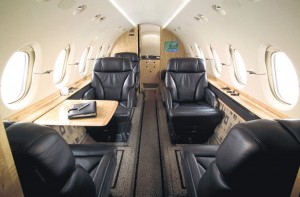
Priced at $13.79 million, the Hawker 850XP has all the amenities to satisfy any businessperson’s expectations, plus it has an increased 100-nautical mile range.
“A lot of issues are at stake,” he said. “The certification process is one of them. The FAA has worked very closely with industry to come up with ways to improve that flow of the process. I think they’re going to be very effective. Industry and the FAA need to learn to work together, to learn how to make these new processes work effectively and efficiently. The bigger issue in my mind centers on the subject of user fees, and the FAA’s thinking along the lines of imposing user fees on the industry. Both GAMA and the NBAA vehemently oppose that concept. It’s not workable.”
What exactly is the GA industry up against in fighting against user fees? A user-fee system would replace current fuel tax that GA pays. This tax also contributes to the use of airspace that pays for air traffic control services. Currently, funds taken from the Airport and Airway Trust Fund pay for ATC services. But under a user-fee program, the source of funds would dramatically change, and include any aircraft, no matter its type or size. That means the same user fee would be applicable for a large commercial jet or a Cessna 172. Thus, Schuster’s observation that user fees aren’t “workable” for GA is echoed throughout industry.
On the other hand, user fees for the Part 121 commercial airliners would be a very workable plan. They would pay the same amount as any GA aircraft in the sky for airspace and air traffic control services.
The GA industry is fighting against powerful lobbyists who represent the commercial airline industry. Previously, GA has been able to thwart user-fee bills because the airline industry hadn’t campaigned in a united effort. But the airline industry has now united to fight, based on several factors. The airlines claim they use the airspace 70 percent of the time, but pay 90 percent of the costs. They also claim that more first-class passengers will abandon commercial aviation for GA business. First-class passengers have abandoned traditional travel means, but that’s because of overall inferior service, long security screening lines and decreased routes–so airlines can accommodate financial woes.
The bottom line is that airline lobbyists have raised substantial financial backing for their cause. That’s the real danger of Congress approving a user-fee system.
The Bush administration, demonstrating its support for the struggling airline industry, wants to reduce taxes. It backs an FAA user-fee-based system approach to cover ATC services. But the GA industry says that would be crippling.
“If you’re flying a small light jet, with a pilot and a passenger, or you’re flying a Premier, you’d pay the same as someone flying a 747 or an A380, a 555-passenger jet, using a user-fee system,” Schuster said. “On top of which, you’d need to create some kind of infrastructure that says, ‘We know how to keep track of all this, and bill people, and it will be done equitably.’ In our opinion, it’s crazy; it just won’t work. We’re very confidant that at the end of the day others will see the light on this as well.”
Although Schuster and lobbyists for GA associations are opposed to user fees, the current reauthorization legislature proposal being submitted to Congress by the FAA on February 28 is expected to have an attached user-fee proposal.
Schuster said this issue “must find resolution without user fees.” The FAA’s current four-year authorization expires on Sept. 30, 2007. Ironically, that’s the date of expiration of the 10-year aviation excise tax authorization program, which funds the Airport and Airway Trust Fund.
“If additional sources of revenue are required for the FAA, the general funds contribution should be looked to first,” Schuster said. “If there’s a shortfall following that, then fuel taxes would make more sense. It would be much more equitable. Absent better solutions, people are tying to come up with ways to address the issue that the FAA needs some money. We’re going to work very closely with other organizations and political representatives, and try to make certain something comes out of it.
“GAMA is one of the most effective industry associations in Washington. They aren’t just standing back saying, ‘No, no, no,’ to any changes. If there’s a change necessary, then let’s find something that makes sense, and user fees don’t fall under that category.”
Schuster
After earning his bachelor’s degree from Lockhaven State University, Penn., and a master’s degree in systems management from Lake Erie College, Painesville, Ohio, Schuster worked for AlliedSignal Aerospace, Torrance, Calif., and Westinghouse Electric Naval Systems in Cleveland, Ohio. Before joining Raytheon, he served as executive vice president and then president of MagneTek Inc., Nashville, Tenn.
Before his appointment of chair and CEO of RAC, he was president of Raytheon’s aircraft integration systems. He has more than 20 years of operation experience.
Schuster hasn’t had too many bad days lately, but what did he think about when he faced dark days at RAC? What lightened his stress and brought a smile to his face?
“Catching up with what my four sons have been doing, and relaxing with my wife Ann has always been it,” he said. “Hearing about our boys’ antics always makes me smile.”
For more information on RAC, visit [http://www.raytheonaircraft.com].











